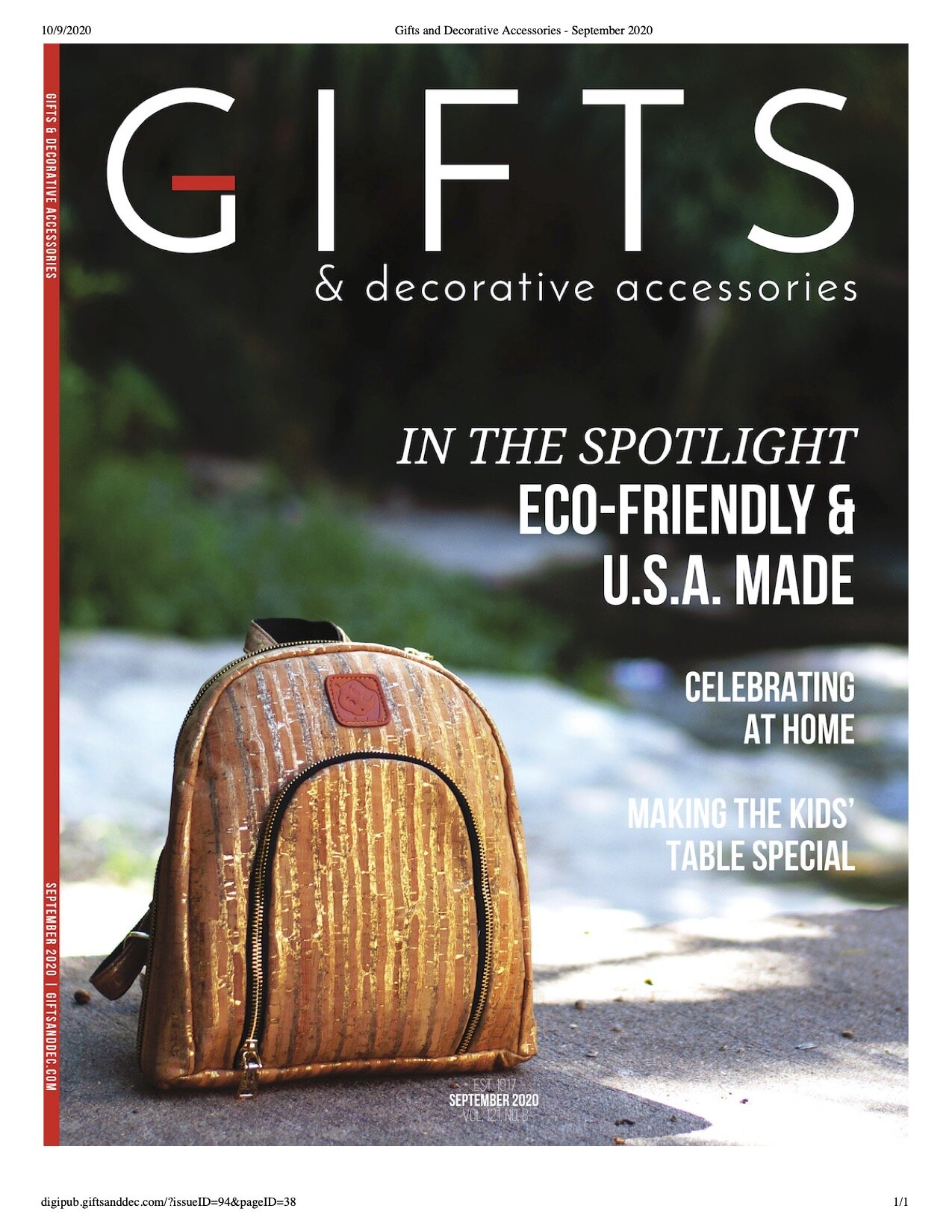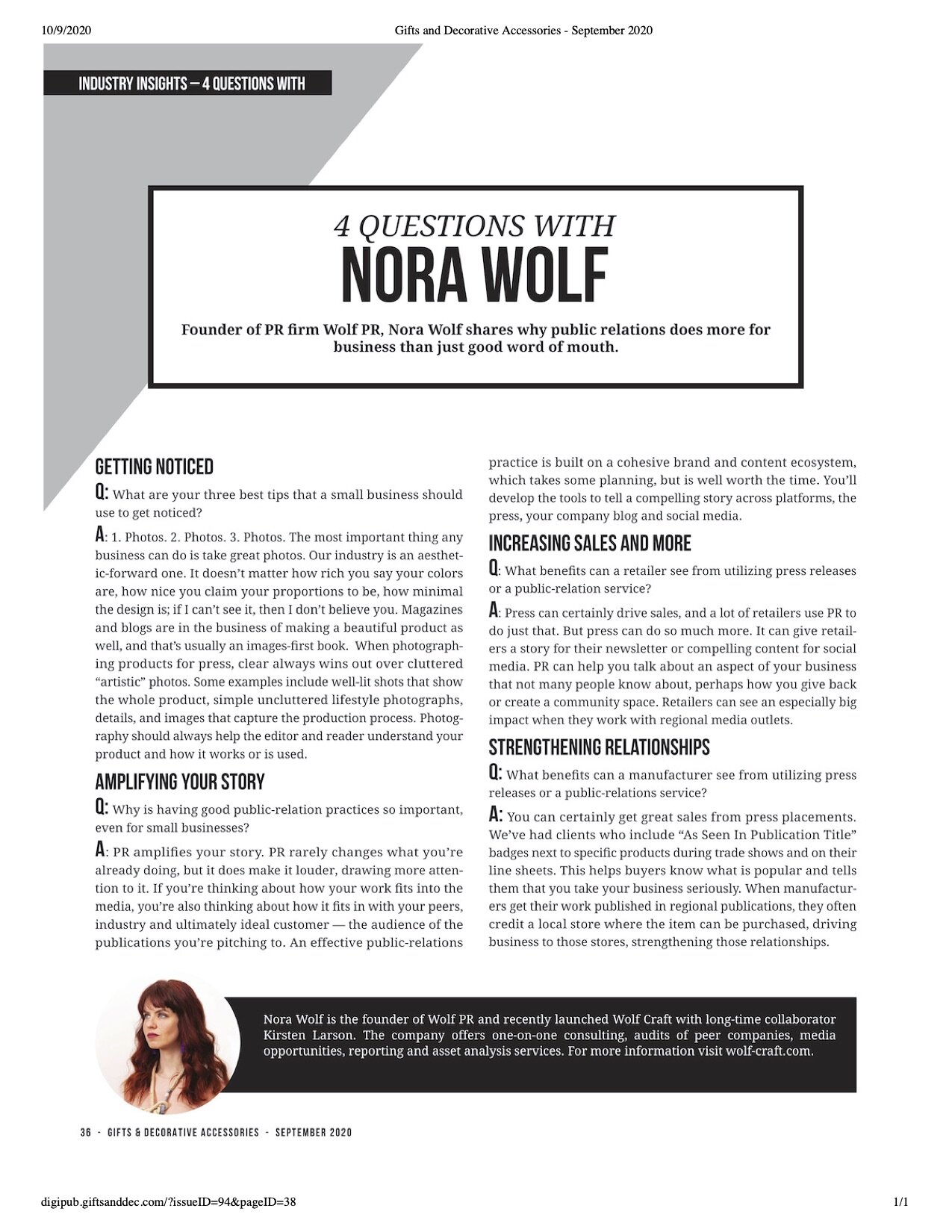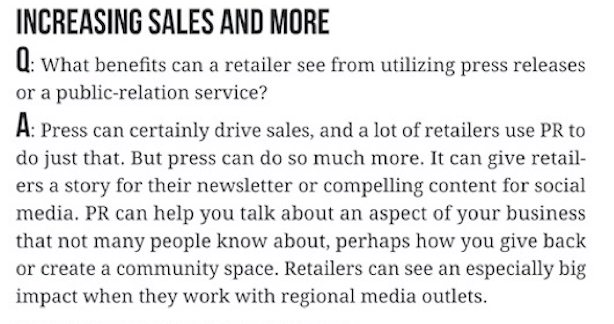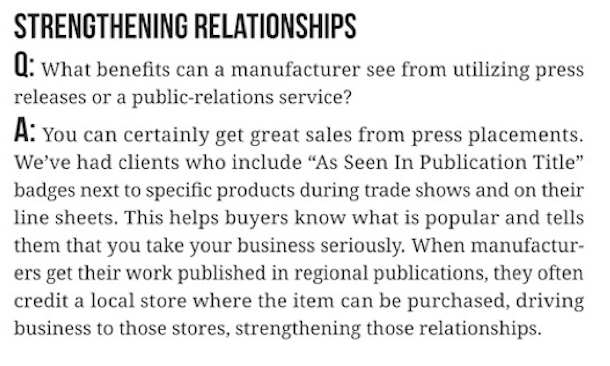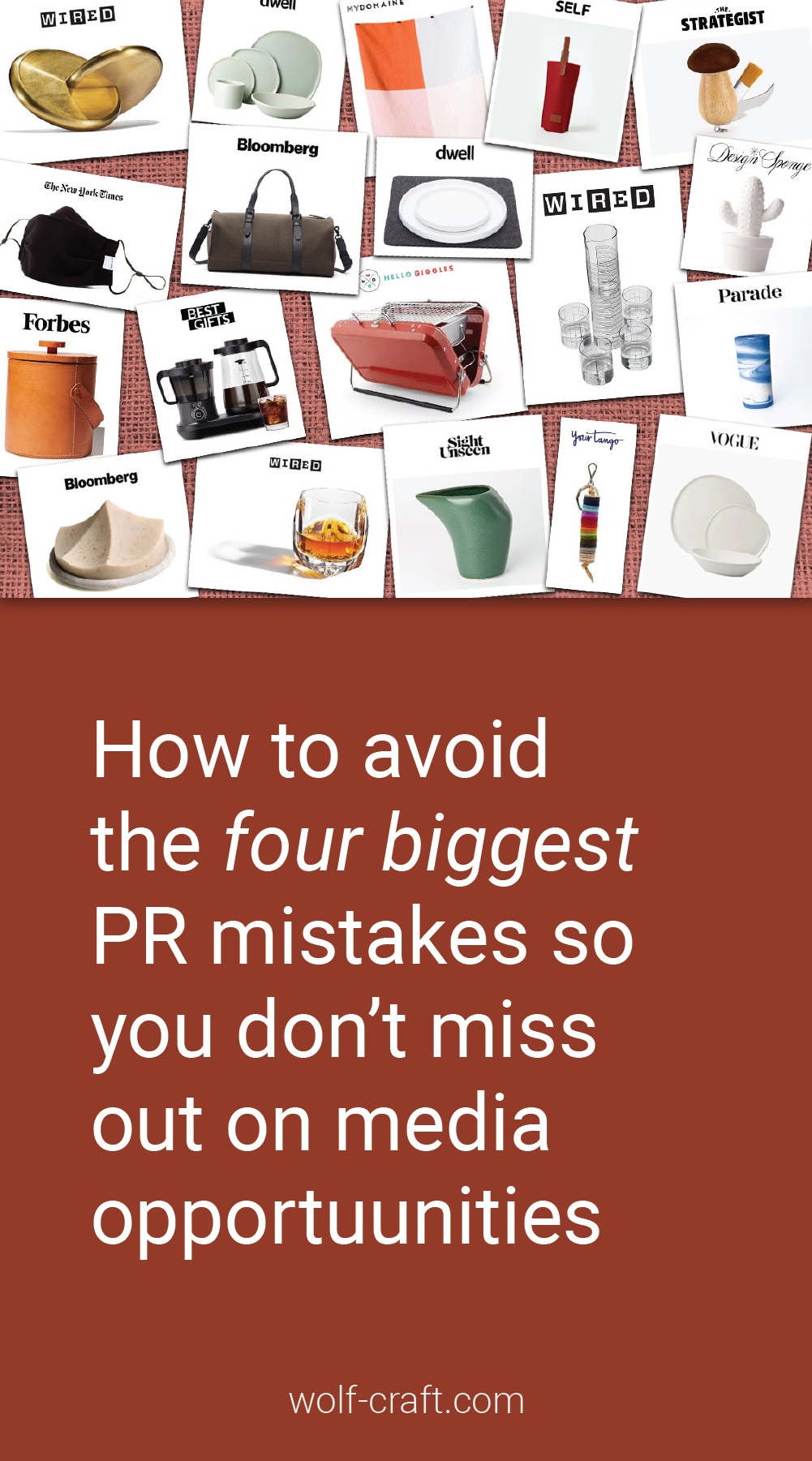4 BIG PR Mistakes and How To Avoid Them
Gifts and Dec interviewed me about four big PR DO’s, but today I wanted to share four big DON’Ts that I’ve witnessed over and over again. You can do all the right things when it comes to getting media coverage, but you're not going to get it if you're also doing all the WRONG things at the same time.
(side note: Gifts and Dec is a trade publication focused primarily on the gift industry, and it’s been around since 1971!)
1. You don’t invest in photography.
Sure, a brand may have some photos, but the colors are weak, the backgrounds are distracting, and there just aren’t enough images! Plus the images are sometimes years old. Ask anyone I’ve ever worked with, they will tell you that when it comes to photography, I sound like a broken record. But that won’t stop me from saying it over and over again. Photography is truly the number one, most important investment you can make in your business outside of product development.
Did you know that there are different types of photography you can and should be taking depending on what you’re trying to promote? Do you know the difference between silo against white/white sweeps/ecom photos, in-situ/environmental shots, and merchandized photos? We’re launching a photography guide soon and if I can humble brag for a moment, it’s going to be an incredibly helpful guide. If you want to be alerted when it launches make sure you’re on our newsletter.
2. You don’t know what your peers are doing.
To effectively communicate with the media, you have to very clearly understand how your work is different from your peers. For example, once I was invited to give a guest critique for design students. One student was building a hydroponic garden system. During his presentation he showed several different “competitors’” hydroponic systems. They were all minimal and white, with Scandinavian styling. The work he then presented? It was also minimal, white, Scandi-style. As a consumer his design gave me no good reason to purchase his over any other hydro-garden already on the market. And as an editor for a design publication, I would have no reason to feature it.
Now, if he had made a hydroponic garden that took its inspiration from, say, Piet Mondrian and used differently sized rectangles in red, blue, and yellow, with black fasteners…. well now you have a story! What a great visual. CAN YOU IMAGINE THE PHOTOS? And! from a business perspective you’ll have an invested customer base who is looking for an alternative to an already saturated aesthetic.
If you don’t understand the existing competitor landscape, odds are your business will fall flat. The same goes for the stories you want to tell to the media. When you know what exactly differentiates your work from your peers you’ll be able to create unique story angles for your media pitches.
3. You rely on press to increase sales.
Would you like to know a HUGE RED FLAG that lets me know to walk away from a potential new client? It goes like this-
Me- What are your PR goals?
Potential Client- We want to use PR to increase our sales.
Me (to myself, in my head)- noooooooo!!!!
PR is an incredible, powerful tool, but IT IS NOT A SALES TOOL.
Newsletters can be a sales tool.
Advertising is a sale tool.
Sales can be a happy side effect of a press feature, but it should never be the only reason you pursue PR. If you want to see a bump in your sales, work on marketing strategy. If you want to share parts about your business that other people don’t know about, do PR. If you want to highlight a product launch, share your inspirations, increase brand awareness, become a tastemaker and a thought leader, if you want a story about your business and how its grown or responded to challenges, do PR.
If you are finding this post helpful we think you’ll get a lot out of our 5-Day Pitch the Media Mini Course
4. You aren’t available for local opportunities.
I once had a client who didn’t live in the city where their business is headquartered. They would visit once every 4-6 weeks to manage the sales team but they didn’t ever stay to attend industry events. Because they were never around, they couldn’t attend the few dinners they were invited to. They expected the sales team to do this work, but I can tell you, the media doesn’t want to have dinner with a sales person. They want to have dinner with the creator! Your peers don’t want to collaborate with your reps, they want you.
My client missed opportunities to host events in their showroom because, again, they weren’t present. Their peers never thought to reach out for interesting (and press worthy) collaborations because a personal relationship hadn’t been established. As the years passed, they watched their peers — who made products at the same price point — grow their businesses and get tons of media attention. My client missed out on all these organic opportunities because they didn’t focus on local peer relationships. They only focused on their direct clients.
With income, you want a diversity of sources. When you rely too much on one income stream you become beholden to it and if it ever dries up you’re in trouble. You want a similar diversity with business and media relationships. Make sure you invest time to get to know your peers, the media professionals in your industry, and your sales team.
